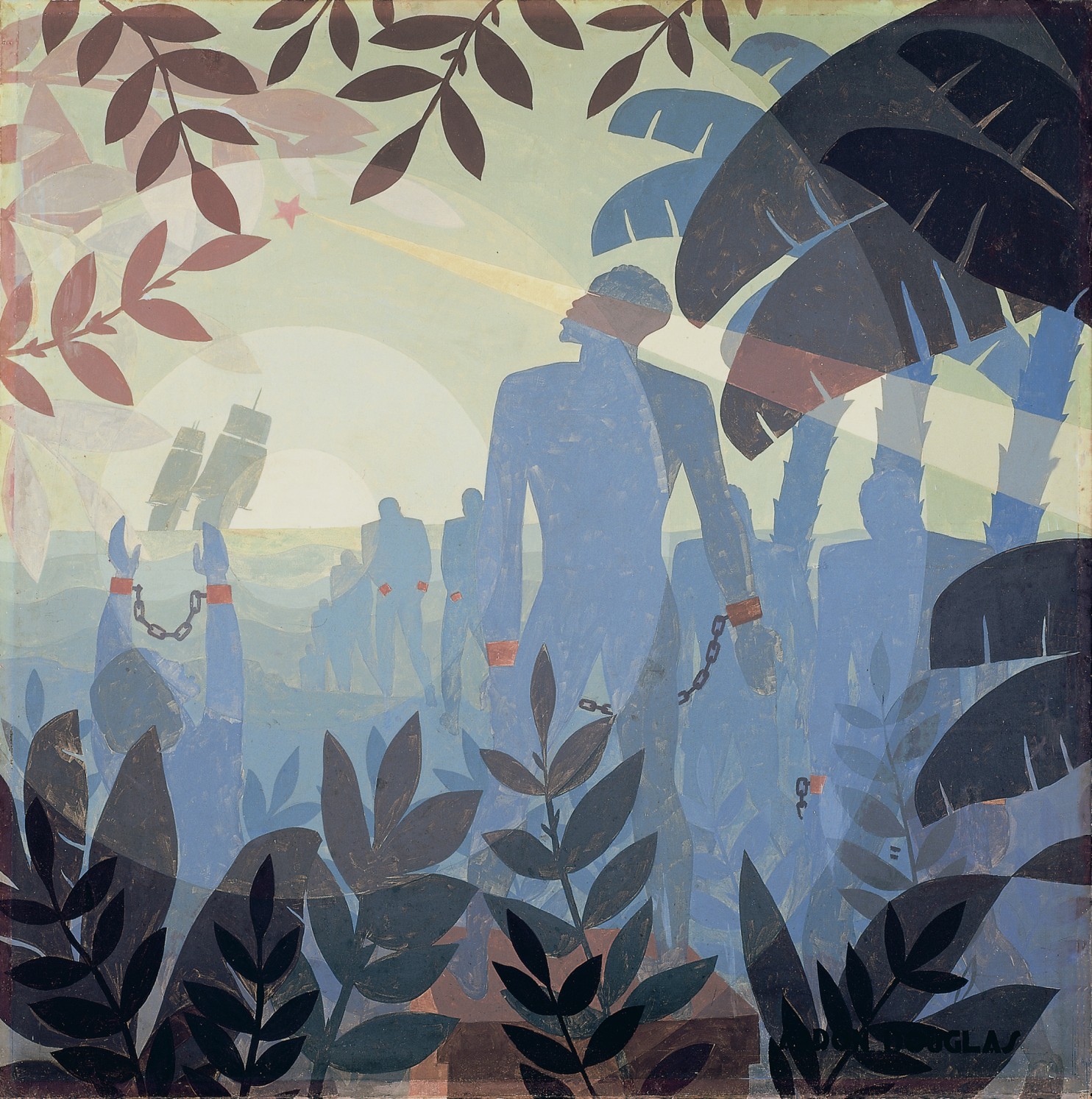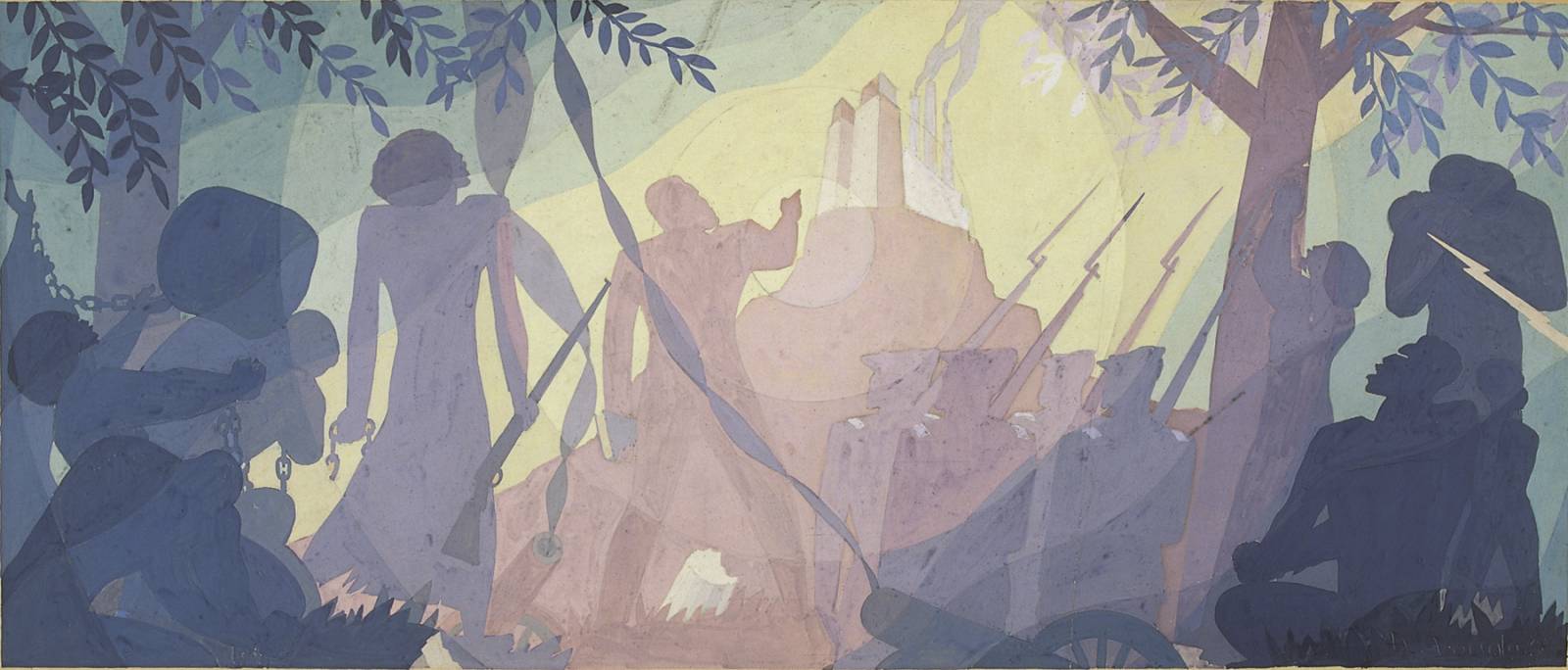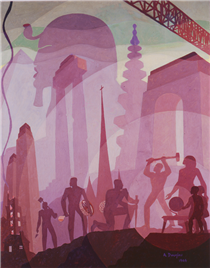A Long Way from Home Aaron Douglas 1937. Biography May 26 1898 February 3 1979 Aaron Douglas May 26 1898.

Artist Of The Month Aaron Douglas Muddy Colors
Harriet Tubman 1931 by Aaron Douglas.

. Aaron Douglas May 26 1899February 2 1979 was an African American painter and graphic artist who played a leading role in the Harlem Renaissance of the 1920s. Born in Topeka Kansas young Aaron developed an interest in art early on. One of Aaron Douglass most popular paintings is The CrucifixionIt was published in James Weldon Johnsons Gods Trombones in 1927.
Famous Paintings In Museums - 14 images - 35 museums ideas in 2021 art museum homeschool art art imb009 examples of museum collection by famous artist step inside famous paintings at indiana museum s new art. He was a significant member of the Harlem Renaissance movement of the 1920s and 1930s. His first major commission to illustrate Alain LeRoy.
February 3 1979 Connection to Kansas. He received his secondary education from Topeka High School graduating in 1917. The Negro in African Setting Aaron Douglas 1934.
Aaron Douglas 1899-1979 was one of the pioneers of the development of African American art. Bill Lamb is a music and arts writer with two decades of experience covering the world of entertainment and culture. February 3 1979 was an African-American painter and a major figure in the Harlem Renaissance.
About the Artist. What did Aaron Douglas paintings mean. He built up his craft profession by painting wall paintings and making representations that tended to social issues around race and isolation in the United States by using African-driven symbolism.
Harriet Tubman was famous before the Civil War for leading African Americans out of slavery and into freedom in Canada where the Fugitive Slave Law held no power. A leading Harlem Renaissance painter Douglas artistic interests in modernism and African art fueled his artistic style. The Creation Aaron Douglas 1935.
Style The style Aaron Douglas developed in the 1920s synthesized aspects of modern European ancient Egyptian and West African art. Aaron Douglas was a 20th century African-American artist credited as the founder of the Harlem Renaissance. Douglas distinctive style of geometric symbolism featuring flat silhouettes of human figures muted colors and images that are symbolic not realistic may be seen on many.
Aaron Douglas May 26 1899 February 3 1979 was an American painter illustrator and visual arts educator. Carl van Vechten Aaron Douglas April 10 1933 photograph Yale Collection of American Literature Beinecke Rare Book and Manuscript Library Yale University. 19351939 Metropolitan Museum of Art and The Judgment Day 1939 National Gallery of.
Seven Negro Sermons in VerseThe seventh panel in the series Let My People Go visually interprets the Old Testament story about Gods order to Moses to lead. He was later dubbed the father of Black American art. He is sometimes referred to as the father of black American art Douglas developed an interest in art early on finding some of his inspiration from his mothers love for painting watercolors.
A series of circles expands from the figure of Tubman outward. He was influenced by his mother who painted with watercolors. Through his collaborations illustrations and public murals he established a method of combining elements of modern art and African culture to celebrate the African-American experience and call attention to racism and segregation.
Douglas is sometimes referred to as the father of Black American art as he was a central figure in the development of an artistic vocabulary that generations of African-American artists would use to present their culture and identity on their own terms and to combat popular racist depictions of African Americans. Douglass painting is dedicated to Tubman and her accomplishments. He was born in Kansas and educated in Topeka and then in Michigan at the Detroit Museum of Art.
Aspirations Aaron Douglas 1936. Aaron Douglas was an African-American painter who was influential in the Harlem Renaissance 100 years ago. This radiant painting in lavender and yellow-gold hues belongs to a series of eight panels that revisits designs Aaron Douglas made in 1926 to illustrate author and activist James Weldon Johnsons Gods Trombones.
New York and Washington DCThe Metropolitan Museum of Art and the National Gallery of Art have each acquired a significant work by the leading visual artist of the Harlem Renaissance Aaron Douglas American 18991979. His works are a blend of Art Deco and elements of Egyptian wall paintings. Douglas Aaron Look for your Aaron Douglas oil on canvas reproduction paintings here.
In both his style and his subjects Aaron Douglas revolutionized African-American art. Douglas created some of his best-known painting in the 1930s. Let My People Go Aaron Douglas 1935-1939.
Aaron Douglas. His best-known paintings. Aaron Douglas was the most prominent African-American artist of the Harlem Renaissance movement of the 1920s.
Summary of Aaron Douglas. Was born in Topeka Kansas on May 26 1899. Into Bondage Aaron Douglas 1936.
What was Aaron Douglas most famous painting. Aaron Douglas was an African American painter and graphic artist who played a leading role in the Harlem Renaissance of the 1920s and 1930s. National Gallery of Art.
Born in Topeka Achievement. Aaron Douglas Harlem Renaissance Painter. From a very young age he had developed a keen interest in art which his mother supported.
He was a major figure in the Harlem RenaissanceHe developed his art career painting murals and creating illustrations that addressed social issues around race and segregation in the United States by utilizing African-centric imagery. He was a significant figure in the Harlem Renaissance. Aaron Douglas was an American painter artist and visual expressions teacher.
A leader within the Harlem Renaissance Douglas created a broad range of work that helped to shape this movement and bring it to national prominenceThrough his collaborations illustrations and public murals he established a method of combining elements. Aaron Douglas was an African-American painter and graphic artist who played a leading role in the Harlem Renaissance of the 1920s and 1930s. On February 3 1979 Aaron Douglas was born to Aaron and Elizabeth Douglas in Topeka Kansas.
Sometimes called the father of black American art Douglas was interested in art early in his life. Song of the Towers Aaron Douglas 1934. Clear-cut delineation change of shadows and light stylized human bodies and geometric figures as concentric.
May 26 1899 Died. In both his style and his subjects Aaron Douglas revolutionized African-American art. The Legacy of Aaron Douglas.
It was then that he created one of his most legendary works a series of murals entitled Aspects of Negro Life that featured four panels each depicting a different part of the African-American experience. The two paintings Let My People Go ca. The crucifixion scene that is depicted in the painting shows several elements that constitute Douglas art.
Go Down Death Aaron Douglas 1934.

Aaron Douglas Paintings Go To The Met And The National Gallery The New York Times

Artist Of The Month Aaron Douglas Muddy Colors

Artist Of The Month Aaron Douglas Muddy Colors

Aaron Douglas Major Artist Of The Harlem Renaissance Kentake Page

Aaron Douglas 17 Artworks Painting

How Artist Aaron Douglas Put Music Into His Murals Interlude

Celebrate Black History Month And See Aaron Douglas S Aspiration De Young
Aaron Douglas Let My People Go The Metropolitan Museum Of Art
0 comments
Post a Comment